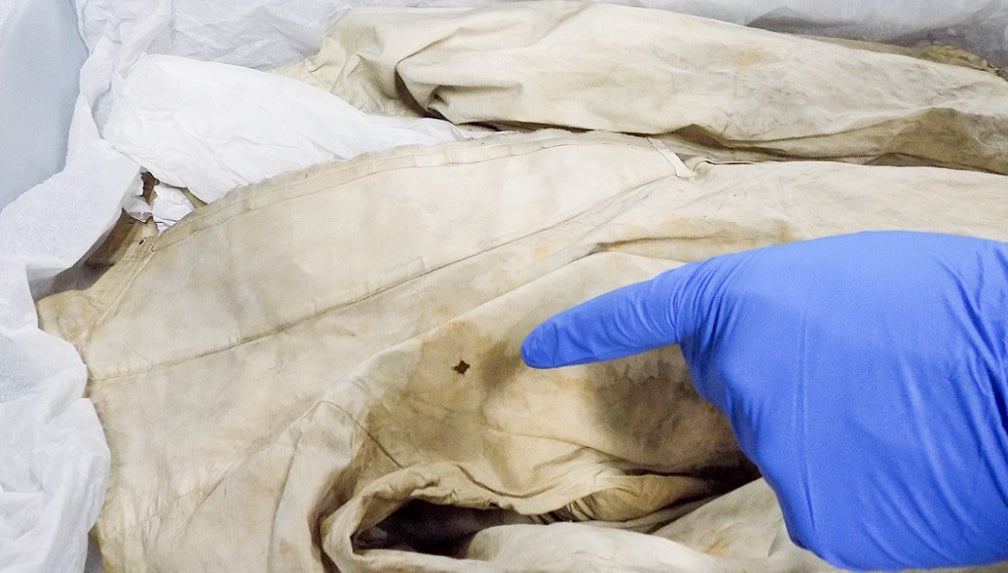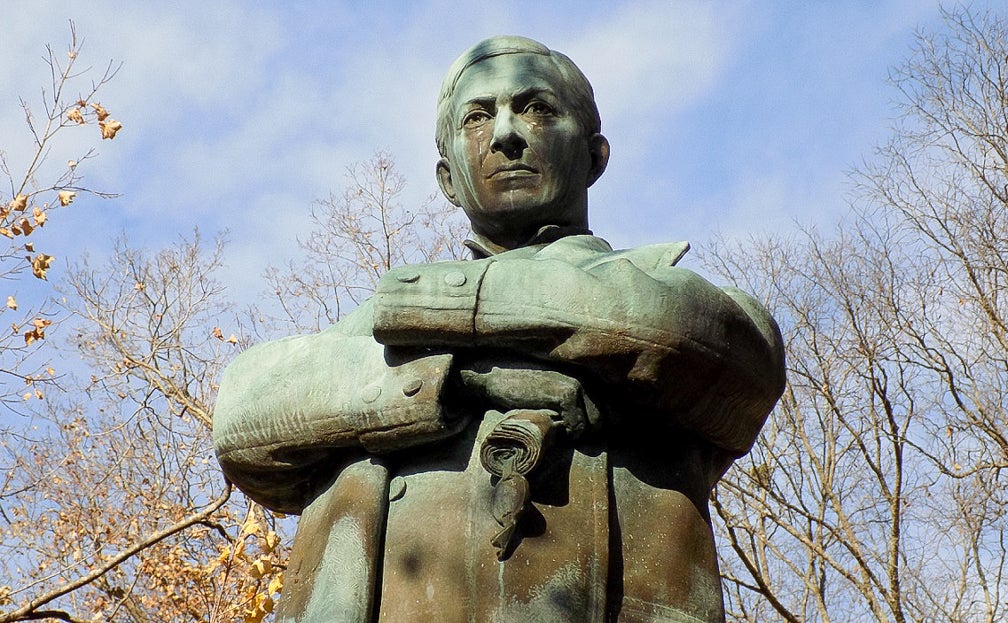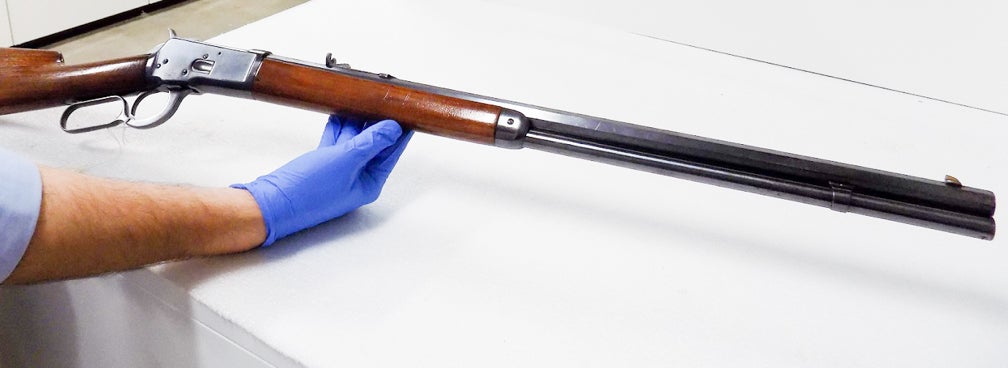By Stuart W. Sanders
A shot rang out at the Old Capitol in downtown Frankfort this time 120 years ago.
On Jan. 30, 1900, an assassin’s bullet struck William Goebel, who had recently run for governor. Taken to a hotel room, Goebel was sworn in as the state’s chief executive. He died a few days later.
Goebel is the only governor in U.S. history to have been assassinated.
Born in Pennsylvania in 1856, Goebel’s family moved to Covington when he was a boy. After becoming an attorney, he served as a state senator before running for governor in 1899.
During that election, William S. Taylor beat Goebel by nearly 2,300 votes. A three-member election committee declared Taylor to be the governor. Taylor was sworn in, Goebel contested the election, and armed men from both political parties then converged on Frankfort.
After Goebel was shot, Taylor called out the state militia to keep order. As the Kentucky State Guard deployed cannon around the capitol, the legislature declared Goebel to be the winner of the election, an action that Kentucky courts upheld. Taylor, accused of being involved in Goebel’s murder, fled to Indiana.
According to historian Dr. Thomas D. Clark, these events left the state “in a hopeless confusion.” Several men were later convicted in the plot to kill Goebel, but the actual shooter remains unknown.
Today, the Kentucky Historical Society (KHS) has a number of artifacts related to this chaotic time.
According to KHS’s registrar Beth Caffery Carter, several of the objects were originally held as evidence in the trial of those who were accused of plotting the assassination.
“Today, the artifacts are used as primary resources to reflect on this contentious time in Kentucky history,” Carter said.
One artifact is an 1896 Winchester rifle purchased by Kentucky Sen. John W. Martin. According to family tales, Martin reputedly bought the gun during the crisis “to shoot Democrats.” Fortunately, the weapon was never fired in anger.
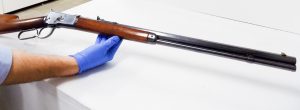
A rifle purchased by a state senator during the Goebel assassination crisis. (Photo by Keith Jackson)
The coat that Goebel was wearing when he was killed is on display in KHS’s main exhibit. It is located next to a bust of Goebel, a lithograph of the slain governor, political ribbons and buttons from his 1899 campaign, a postcard from his funeral and a cane that is engraved with his likeness.
Perhaps the most captivating artifact related to the assassination is the bloodstained shirt that Goebel was wearing when he was shot. Although the back of the shirt was cut apart — likely by souvenir hunters — the bullet hole is clearly visible under the right sleeve.
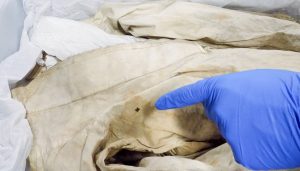
Goebel’s bloodstained shirt, with a hand pointing to the bullet hole. (Photo by Keith Jackson)
Although the history behind these artifacts is grim, the pieces showcase an important, yet tumultuous, time in Kentucky history. They certainly teach us to appreciate peaceful transitions of political power.
All of the items can be viewed on KHS’s digital collections catalog, which is accessible via the Society’s website at www.history.ky.gov.
Stuart W. Sanders is the Kentucky Historical Society’s History Advocate.

